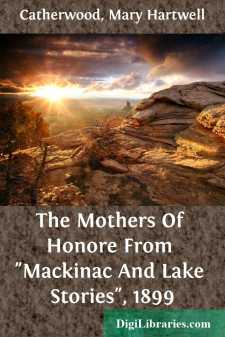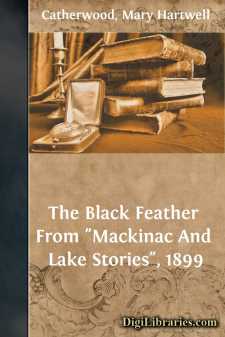Categories
- Antiques & Collectibles 13
- Architecture 36
- Art 48
- Bibles 22
- Biography & Autobiography 813
- Body, Mind & Spirit 142
- Business & Economics 28
- Children's Books 17
- Children's Fiction 14
- Computers 4
- Cooking 94
- Crafts & Hobbies 4
- Drama 346
- Education 46
- Family & Relationships 57
- Fiction 11829
- Games 19
- Gardening 17
- Health & Fitness 34
- History 1377
- House & Home 1
- Humor 147
- Juvenile Fiction 1873
- Juvenile Nonfiction 202
- Language Arts & Disciplines 88
- Law 16
- Literary Collections 686
- Literary Criticism 179
- Mathematics 13
- Medical 41
- Music 40
- Nature 179
- Non-Classifiable 1768
- Performing Arts 7
- Periodicals 1453
- Philosophy 64
- Photography 2
- Poetry 896
- Political Science 203
- Psychology 42
- Reference 154
- Religion 513
- Science 126
- Self-Help 84
- Social Science 81
- Sports & Recreation 34
- Study Aids 3
- Technology & Engineering 59
- Transportation 23
- Travel 463
- True Crime 29
Mary Hartwell Catherwood
Mary Hartwell Catherwood (1847-1902) was an American author known for her historical fiction set in the American Midwest, particularly focusing on French colonial history. Her notable works include "The Romance of Dollard" and "The White Islander," which reflect her meticulous research and vivid storytelling. Catherwood's writing earned her a respected place in American literature during the late 19th and early 20th centuries.
Author's Books:
Sort by:
When the British landed on the west side of Mackinac Island at three o'clock in the morning of July 17,1812, Canadians were ordered to transport the cannon. They had only a pair of six-pounders, but these had to be dragged across the long alluvial stretch to heights which would command the fortress, and sand, rock, bushes, trees, and fallen logs made it a dreadful portage. Voyageurs, however, were...
more...
The sun was shining again after squalls, and the strait showed violet, green, red, and bronze lines, melting and intermingling each changing second. Metallic lustres shone as if some volcanic fountain on the lake-bed were spraying the surface. Jules McCarty stood at his gate, noting this change in the weather with one eye. He was a small, old man, having the appearance of a mummied boy. His cheek-bones...
more...
THE KING OF BEAVER Success was the word most used by the King of Beaver. Though he stood before his people as a prophet assuming to speak revelations, executive power breathed from him. He was a tall, golden-tinted man with a head like a dome, hair curling over his ears, and soft beard and mustache which did not conceal a mouth cut thin and straight. He had student hands, long and well kept. It was not...
more...
As his boat shot to the camp dock of beach stones, the camper thought he heard a child's voice behind the screen of brush. He leaped out and drew the boat to its landing upon a cross-piece held by two uprights in the water, and ascended the steep path worn in leaf mould. There was not only a child, there was a woman also in the camp. And Frank Puttany, his German feet planted outward in a line,...
more...
THE SKELETON ON ROUND ISLAND I am to carry Mamselle Rosalin of Green Bay from Mackinac to Cheboygan that time, and it is the end of March, and the wind have turn from east to west in the morning. A man will go out with the wind in the east, to haul wood from Boblo, or cut a hole to fish, and by night he cannot get home—ice, it is rotten; it goes to pieces quick when the March wind turns. I am not...
more...
Over a hundred voyageurs were sorting furs in the American Fur Company's yard, under the supervision of the clerks. And though it was hard labor, lasting from five in the morning until sunset, they thought lightly of it as fatigue duty after their eleven months of toil and privation in the wilderness. Fort Mackinac was glittering white on the heights above them, and half-way up a paved ascent...
more...
* This story is set down exactly as it was told by theIsland Chronicler. Well, I wish you could have been here in Mrs. Gunning's day. She was the oddest woman on Mackinac. Not that she exerted herself to attract attention. But she was such a character, and her manners were so astonishing, that she furnished perennial entertainment to the few families of us constituting island society. She was an...
more...
Early in the Mackinac summer Owen Cunning took his shoemaker's bench and all his belongings to that open cavern on the beach called the Devil's Kitchen, which was said to derive its name from former practices of the Indians. They roasted prisoners there. The inner rock retained old smoke-stains. Though appearing a mere hole in the cliff to passing canoe-men, the Devil's Kitchen was...
more...
The lake was like a meadow full of running streams. Far off indeed it seemed frozen with countless wind-paths traversing the ice, so level and motionless was the surface under a gray sky. But summer rioted in verdure over the cliffs to the very beaches. From the high greenery of the island could be heard the tink-tank of a bell where some cow sighed amid the delicious gloom. East of the Giant's...
more...
Maurice Barrett sat waiting in the old lime-kiln built by the British in the war of 1812—a white ruin like much-scattered marble, which stands bowered in trees on a high part of the island. He had, to the amusement of the commissioner, hired this place for a summer study, and paid a carpenter to put a temporary roof over it, with skylight, and to make a door which could be fastened. Here on the...
more...











